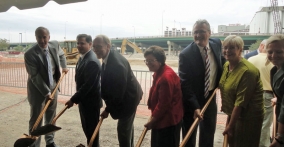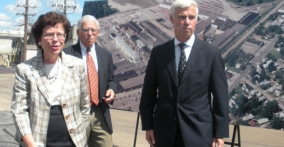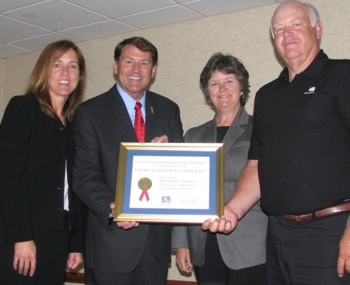Listening to Local Businesses in South Carolina
Guest blog post by Nancy Potok, Commerce Deputy Under Secretary, Economics and Statistics Administration
In the heart of South Carolina’s picturesque horse community, I sat down at the Aiken County Chamber of Commerce to begin the first of two White House Business Council roundtable discussions with local business owners in Aiken and Columbia, S.C. These discussions, focused on rural communities during the month of August, are designed to provide an intimate forum for local businesses to discuss the obstacles they face in creating jobs and growing their businesses.
Attending that discussion, along with about 20 others was Jeorge Klisch, the plant manager of MTU, a German-owned diesel engine company formerly known as “Detroit Diesel” that has been located in Aiken about a year. Earlier that morning I took a tour of MTU’s state of the art facility located about twelve miles outside Aiken in the once thriving manufacturing community of Graniteville, S.C.. Having grown up in Detroit with the required elementary school field trip to an automotive plant, I was expecting a hot, loud and oil covered environment. In contrast, MTU was temperature controlled, clean and high tech. During the tour, Klitsch shared with me their plans to bring another 200 jobs to the Aiken area, the need for a skilled workforce, and his efforts to collaborate with surrounding area high schools and technical colleges to adjust their curriculum and support his “ work and learn” initiative that will help fill MTU’s future need for engineers and technicians. I noticed an absence of women in the workplace, but before I asked about it, Klisch said he want to dispel myths held by women about manufacturing jobs and plans to focus on introducing young women and girls to manufacturing, where they are significantly underrepresented at MTU. MTU exports about 50 percent of its products and has invested more than $77 million in this new site with plans for expansion and increased production. Very impressive and a great indication of the growth potential in the Aiken area.











